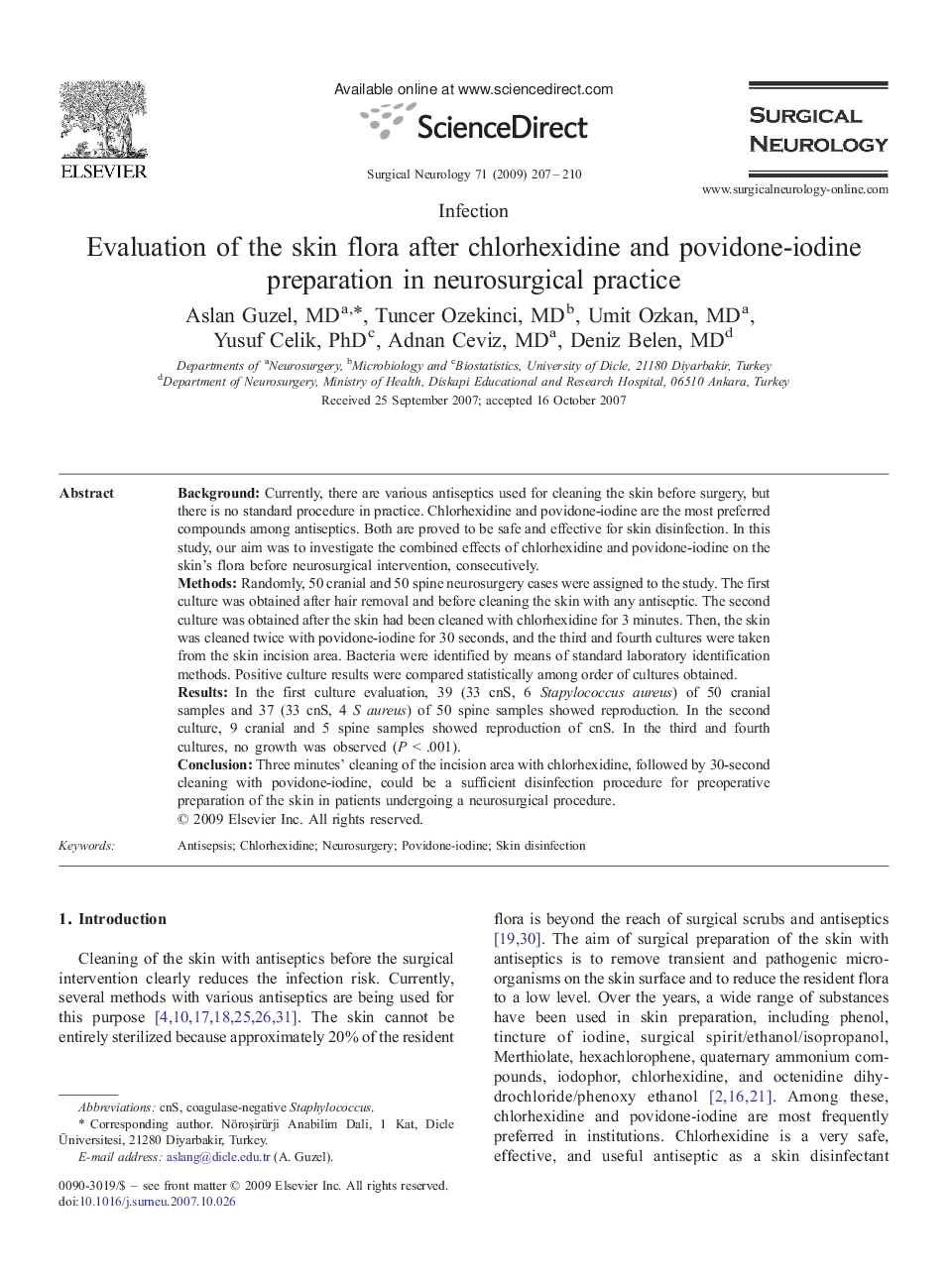| Article ID | Journal | Published Year | Pages | File Type |
|---|---|---|---|---|
| 3092651 | Surgical Neurology | 2009 | 4 Pages |
BackgroundCurrently, there are various antiseptics used for cleaning the skin before surgery, but there is no standard procedure in practice. Chlorhexidine and povidone-iodine are the most preferred compounds among antiseptics. Both are proved to be safe and effective for skin disinfection. In this study, our aim was to investigate the combined effects of chlorhexidine and povidone-iodine on the skin's flora before neurosurgical intervention, consecutively.MethodsRandomly, 50 cranial and 50 spine neurosurgery cases were assigned to the study. The first culture was obtained after hair removal and before cleaning the skin with any antiseptic. The second culture was obtained after the skin had been cleaned with chlorhexidine for 3 minutes. Then, the skin was cleaned twice with povidone-iodine for 30 seconds, and the third and fourth cultures were taken from the skin incision area. Bacteria were identified by means of standard laboratory identification methods. Positive culture results were compared statistically among order of cultures obtained.ResultsIn the first culture evaluation, 39 (33 cnS, 6 Stapylococcus aureus) of 50 cranial samples and 37 (33 cnS, 4 S aureus) of 50 spine samples showed reproduction. In the second culture, 9 cranial and 5 spine samples showed reproduction of cnS. In the third and fourth cultures, no growth was observed (P < .001).ConclusionThree minutes' cleaning of the incision area with chlorhexidine, followed by 30-second cleaning with povidone-iodine, could be a sufficient disinfection procedure for preoperative preparation of the skin in patients undergoing a neurosurgical procedure.
